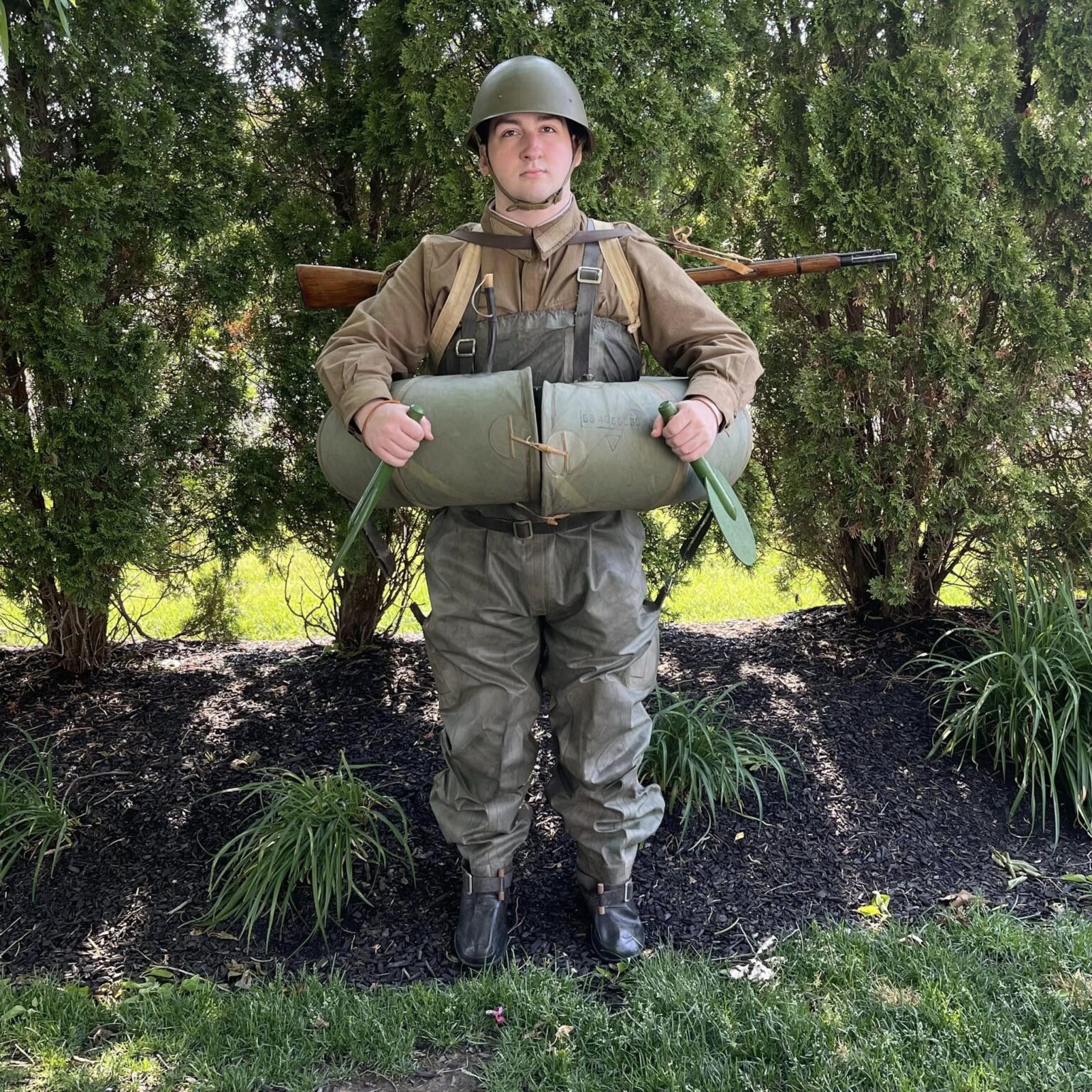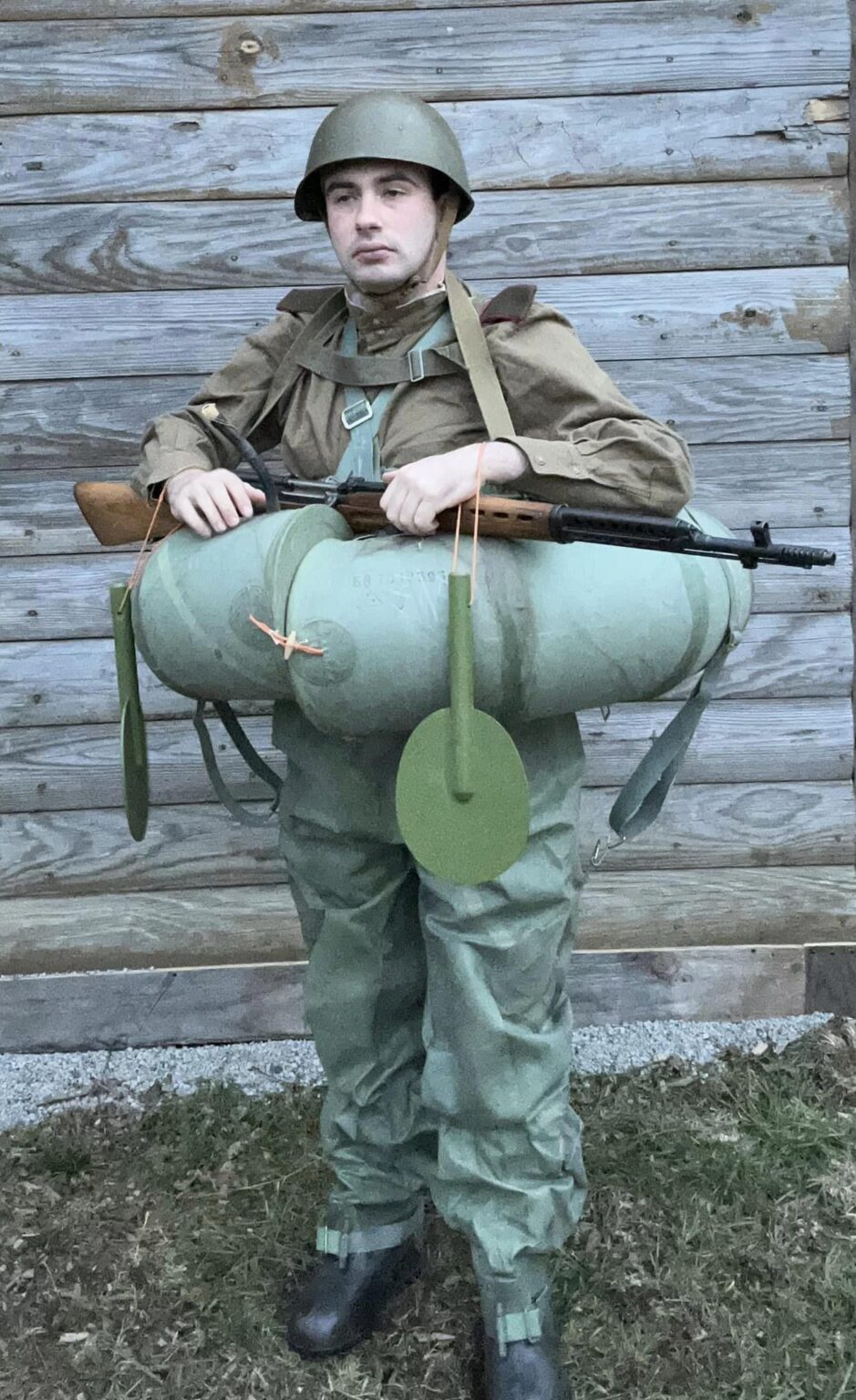PKT/MPK Suit
Designed and adopted in the 1930s, the IPC swimming suit is very unique to the Soviet Red Army, there isn’t a very similar piece of equipment seen in other militaries during the 1930s and going into WWII. The suit, designed to facilitate the efficient movement of individual soldiers through narrow and medium water obstacles, was predominantly utilized by specialized units such as scouts, small infantry groups, pontoniers, and bridge builders, these suits serve as essential gear for executing auxiliary tasks in aquatic environments.

The IPC suit in its original version was under the designation “PKT Swimming Suit” and was adopted by the Red Army in 1931. The PKT swimming suit consisted of hydropants, a float belt, fins – galvanized iron plates and oars. The hydropants are made in large sizes from waterproof fabric and end with boots with fins. The trousers are secured to the fighter with a belt and two belts. In hydropants without a floatation belt, you can work in water at a depth of no more than 120 cm. The floatation belt for supporting a soldier on the water is shaped like a lifebuoy, sewn from waterproof fabric and filled with straw or other light (floating) material. In the traveling position, the PKT was carried on the back.
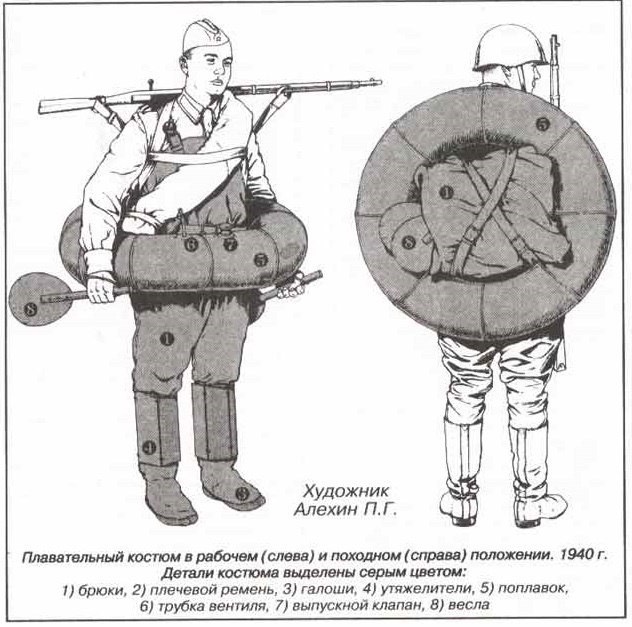
Short oars with a wide blade were made from multi-layer pressed plywood impregnated with a waterproof compound. A serviceman in a swimming suit kept himself on the water in an upright position. Oars are used to speed up the soldier’s movement in the water. Moving his legs, as when walking on land, the fighter uses oars to help the movement. The right hand and left leg or the left hand and right leg work simultaneously.
To put on the suit, you must first remove the rifle and backpack, then put on the hydropants, fastening the belt and shoulder straps, then put on the flotation belt and secure it with the shoulder and inter-leg straps. Having put on the suit, the fighter puts on a backpack and takes the rifle “by the back.” The total weight of the suit was 16 kg, the load capacity was 80 kg. The time to move through calm water over a distance of 100 m when rowing with oars is 5.5 – 6 minutes, when rowing with hands is 7 – 8 minutes.
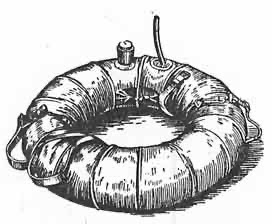
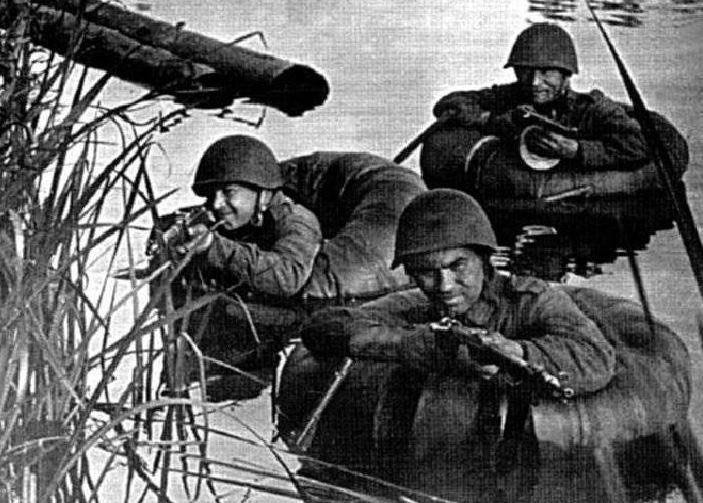
Operating experience has revealed a number of shortcomings in the product. The floatation belt had to be equipped with floating material in advance and transported to the crossing point in working condition, which created a number of inconveniences. Therefore, in 1939, the PKT was replaced by a modernized model of the MPK, where the float belt was already inflatable.
The MPK differed from the PKT by a float and the absence of metal weights, the role of which began to be played by rubber sagging on the sides of the legs. In addition, additional straps appeared on the legs for attaching to the float. These changes not only improved performance, but also reduced the weight of the product from 16 kg to 6.5 kg.
The MPK floatation belt was a cylinder made of dense rubberized fabric with a wire frame inside and 16 partitions with check valves, dividing it into 15 compartments. The design of the valves is such that they do not interfere with the inflation of the float, but significantly complicate the escape of air from the compartments adjacent to the damaged one. The product was inflated through the valve tube so that the fabric was stretched on the frame and the float took the shape of an elongated cylinder; excess air was removed through the exhaust valve. This cylinder was then wrapped around the body, and with the help of fasteners and loops at the ends it was turned into a closed ring. A canvas shoulder strap secured the float at waist level. If the float began to deflate in the water, it could be inflated through the valve tube to the required volume.
The IPC swimming suit is designed to help move individual soldiers through narrow and medium water obstacles and conduct combat in water terrain. These suits are mainly used by scouts and small infantry groups, pontoniers and bridge builders to perform auxiliary work in the water, and miners in the installation of anti-landing mines. The floatation belts could be used to cross heavy small arms (Anti Tank Rifles, Machine Guns, Mortars , ect)
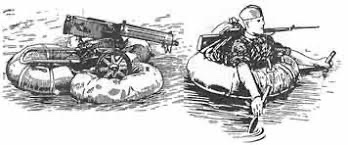
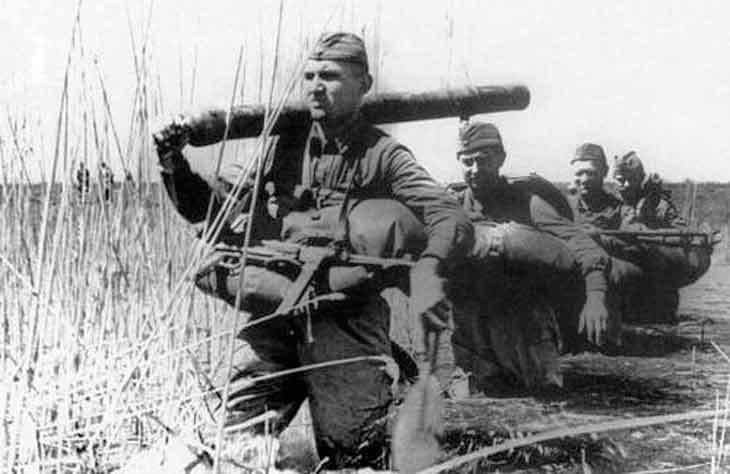
Perhaps one of the rare cases when the IPC were really needed, was critically needed, was the battles of the 9th and 37th Armies of the North Caucasus Front in the floods of the Kuban in the spring-summer of 1943.
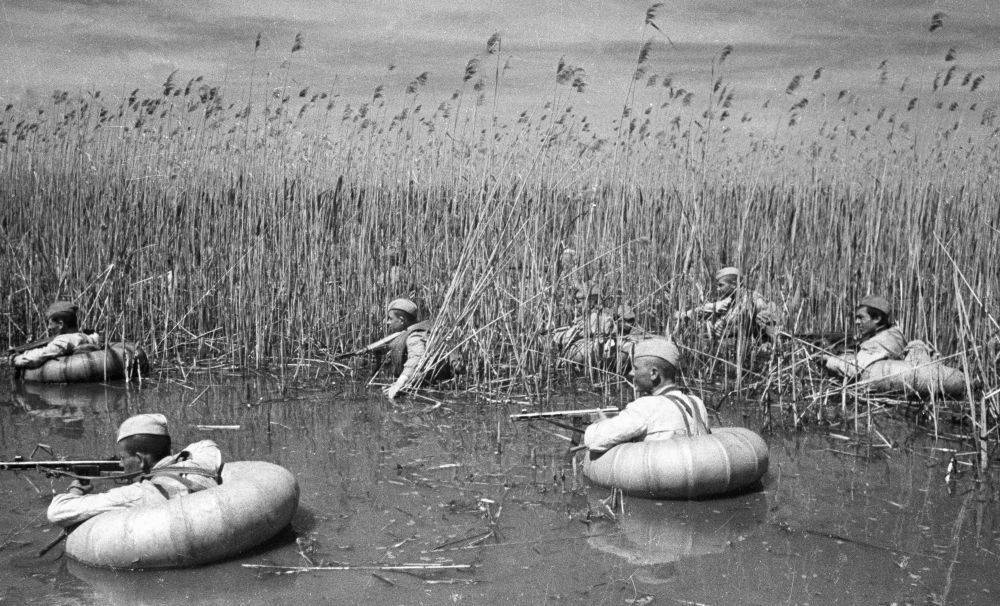
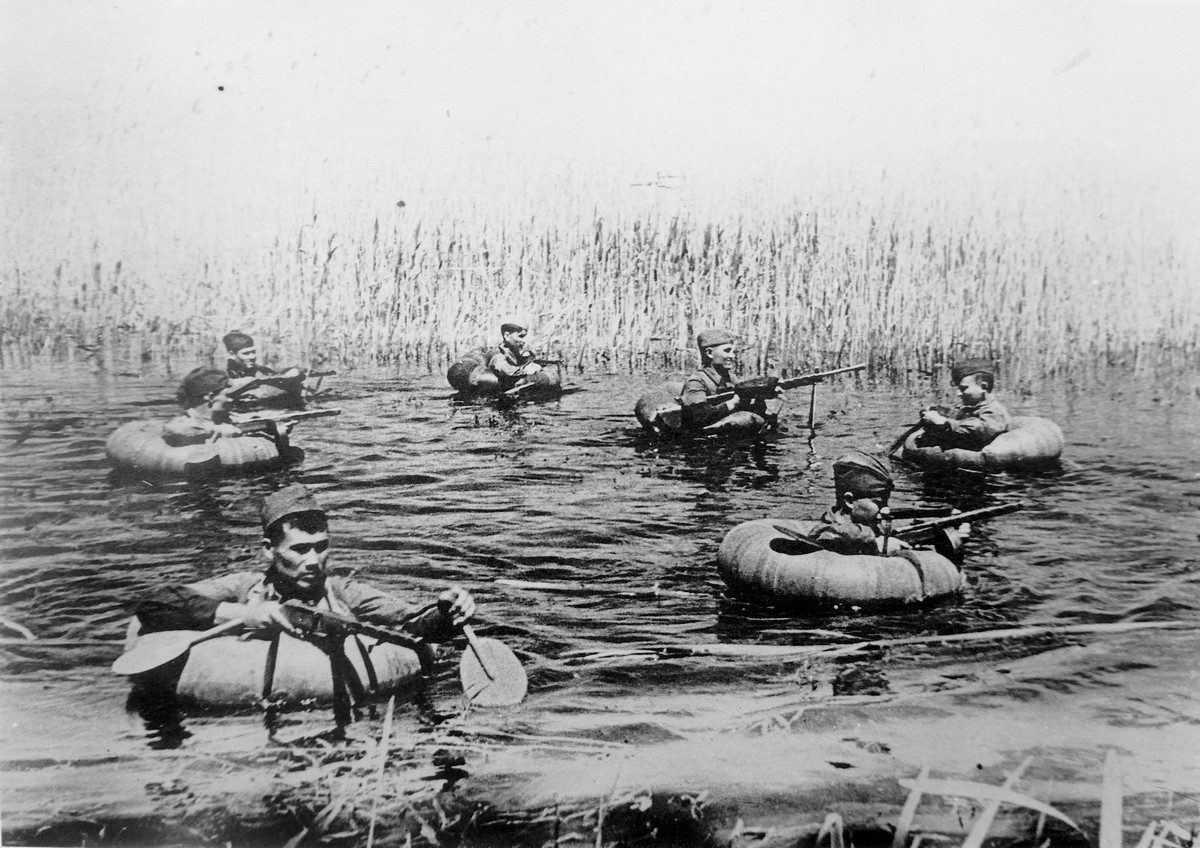
Here’s what B.V. Badanin writes about this area:
“Starting at the village of Troitskaya, flow in a wide strip, sometimes reaching up to 20 km, stretching along the Kuban to the Starorechye, to the west of the village of Varenikovskaya. Countless small estuaries are scattered throughout this huge area, connected by a whole network of ducts, eriks and canals. Every year from April to about June, the floodplains are flooded with flood waters and turn into a continuous water space of over 1,300 square kilometers, abundantly overgrown with reeds up to 3 m high.
The depth of the water covering the rains is usually from 0.6 to 5 meters. Where there are reeds in the reed thickets, they are almost completely filled with floating islets formed from perennial layers of rotten reeds. After the flood, when the water declines, liquid muddy dirt remains on elevated places, very slowly drying and difficult to pass. It is difficult to move along the Kuban rits both by fording and by boat. It is all the more difficult to transport any cargo through them. You need a lot of experience in order to not to stray in the fins from the direction. The terrain is extremely monotonous. Due to the dense wall of high reeds, the view is limited to literally two to three meters.
It is obvious that the success of the combat operations of our infantry with the use of the IPC in this almost impassable area prompted the engineering warlords to keep the IPC on supply to the present time.”
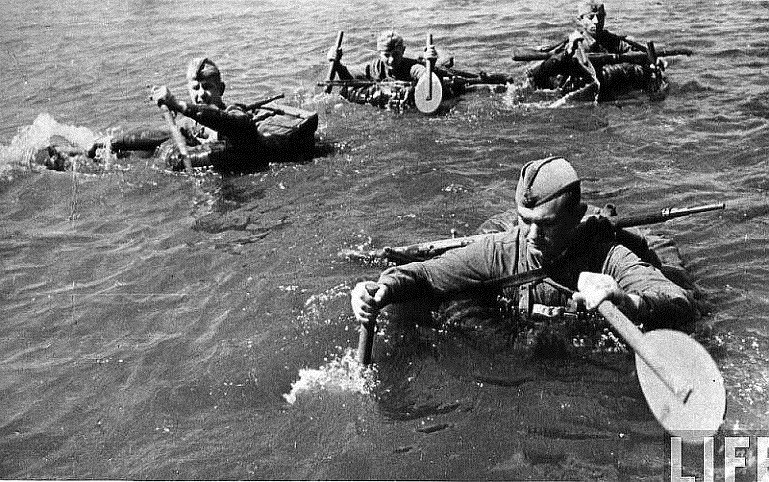
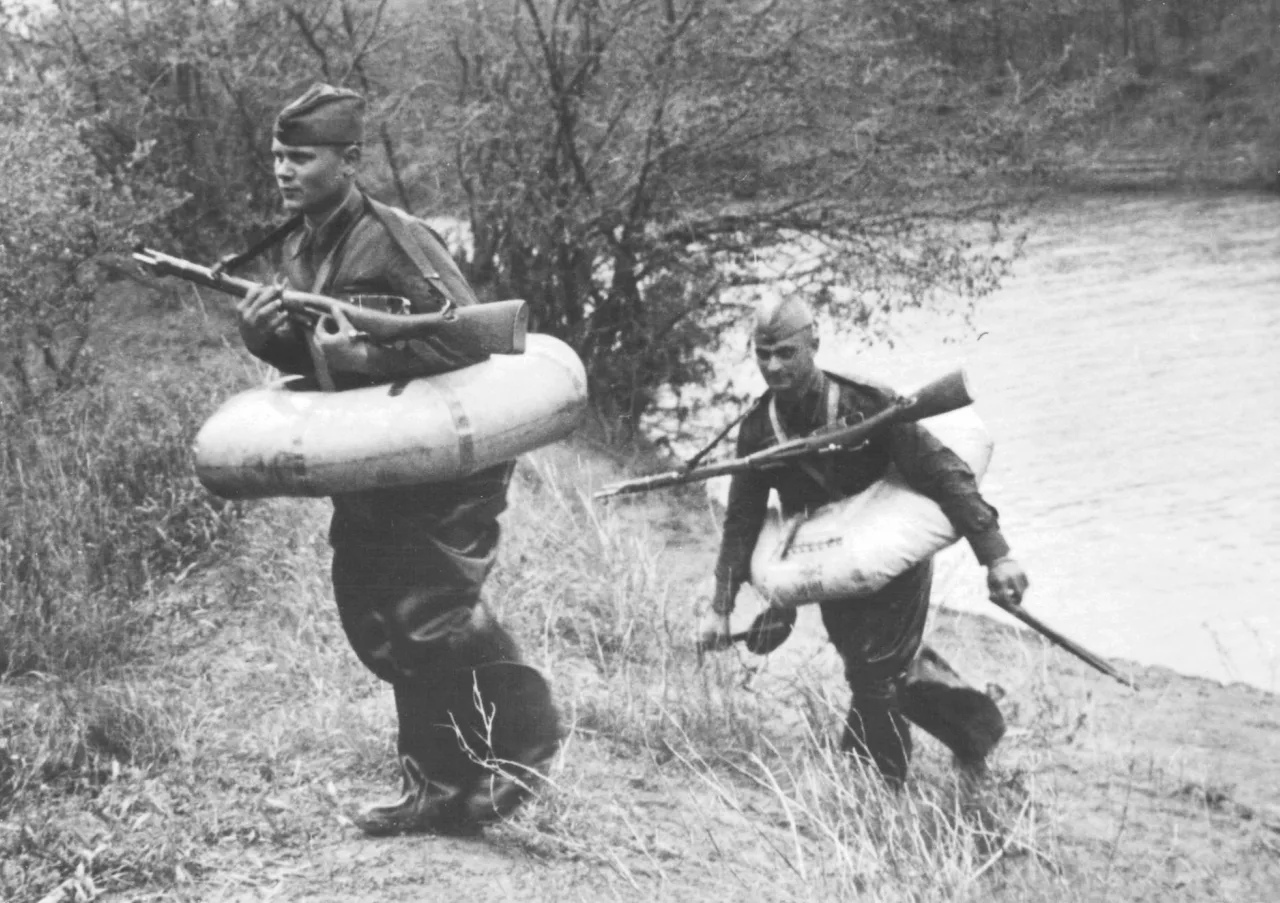
Although, in fact, this suit is not very convenient for crossing under normal conditions, primarily due to the extremely low speed of movement (from 5 to 15 m/min), however, it has survived to supply the Russian army to this day. It is not yet entirely clear in which units and in what quantity these suits were service equipment during the Great Patriotic War, but in the seventies and eighties, two MPKs were still listed (and available) in the report cards of engineering and sapper companies of tank and motorized rifles regiments
Tactical and technical characteristics of the IPC swimming suit:
Material: rubberized fabric and rubber;
Set weight, kg: 6.5;
Hydropants length, mm: 1st size – 160, 2nd size – 168;
Outer diameter of the float belt, mm: 87.5;
Wire frame diameter, mm: 25;
Packed MPK dimensions, mm: 45x40x30;
Putting time, min.: 3-5;
Full load capacity, kg: 90;
Movement speed, m/min: 5-15;
Allowable current speed, m/sec: up to 1.5



